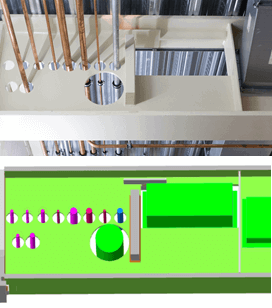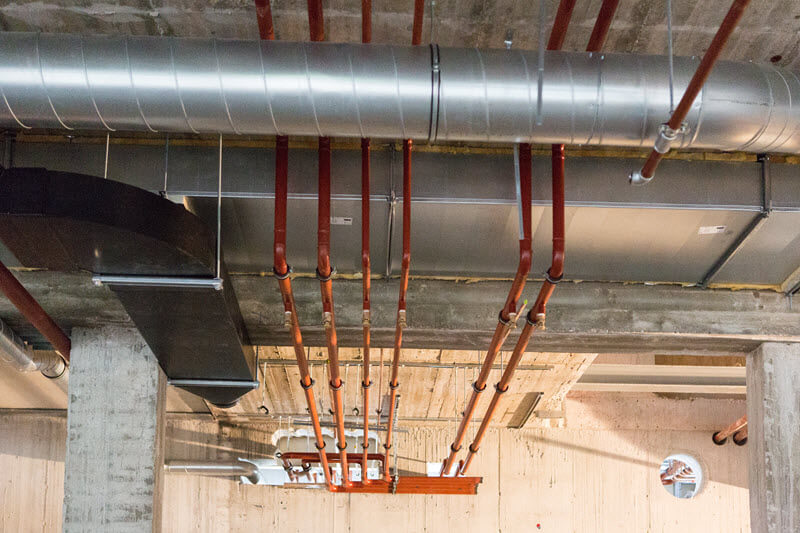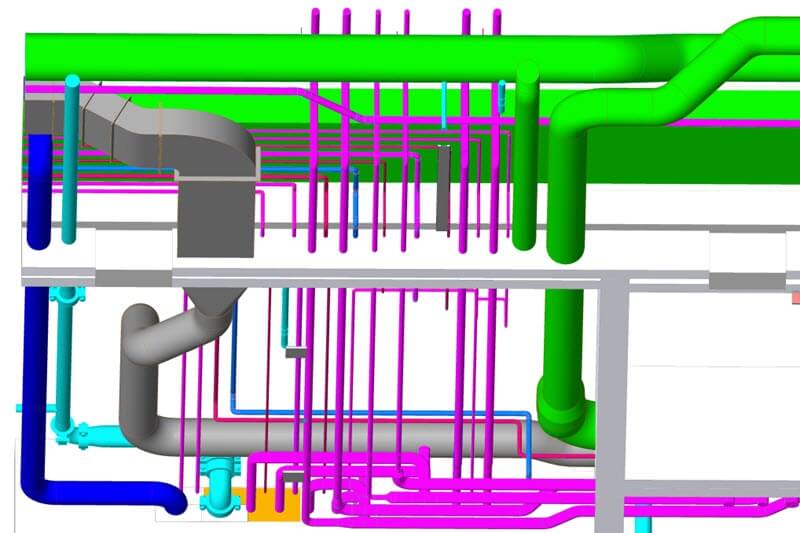Incorporating recesses in a BIM workflow can lead to great efficiency in building projects. This becomes clear at the Earth Simulation Lab: a project with complex installations and heavy structures.
The Earth Simulation Lab at Utrecht University used to be a particle accelerator, but is now being converted into a top research facility for the geosciences. Kris Jansma, project leader at Lammerink Installation Group, talks about the challenge posed by the construction.
Limited space
Kris: "A recess can easily take up a cubic meter of concrete and because of the limited space, it is difficult to do the measurements on site. Therefore the recesses need to be specified in the correct way and at the right place beforehand. This means that the installation must be modelled at a high level early on in the project.”
Recesses in BIM
In order to gain early insights into the recesses, the recesses functionality in Stabicad for Revit was used, in which the recesses are easily generated based on the passages through the construction. Nico Weerheim, modeler for the project explains: "Also because new steel constructions had to be installed in different places in the building, in which recesses had to be specified, it was necessary to model these recesses as well. The steel constructor was able to easily take over the recesses in the BIM model of the steel construction.”

Reduced failure costs thanks to BIM
According to Kris, a BIM approach offers clear advantages for complex projects such as the Earth Simulation Lab. Kris: "In terms of failure costs, it's great. In the past, it happened that parts of the installation had to be repeated a number of times because of coordination or execution errors. But now everything is going well all at once. Every time I'm here, I'm amazed: everything fits at once.”




